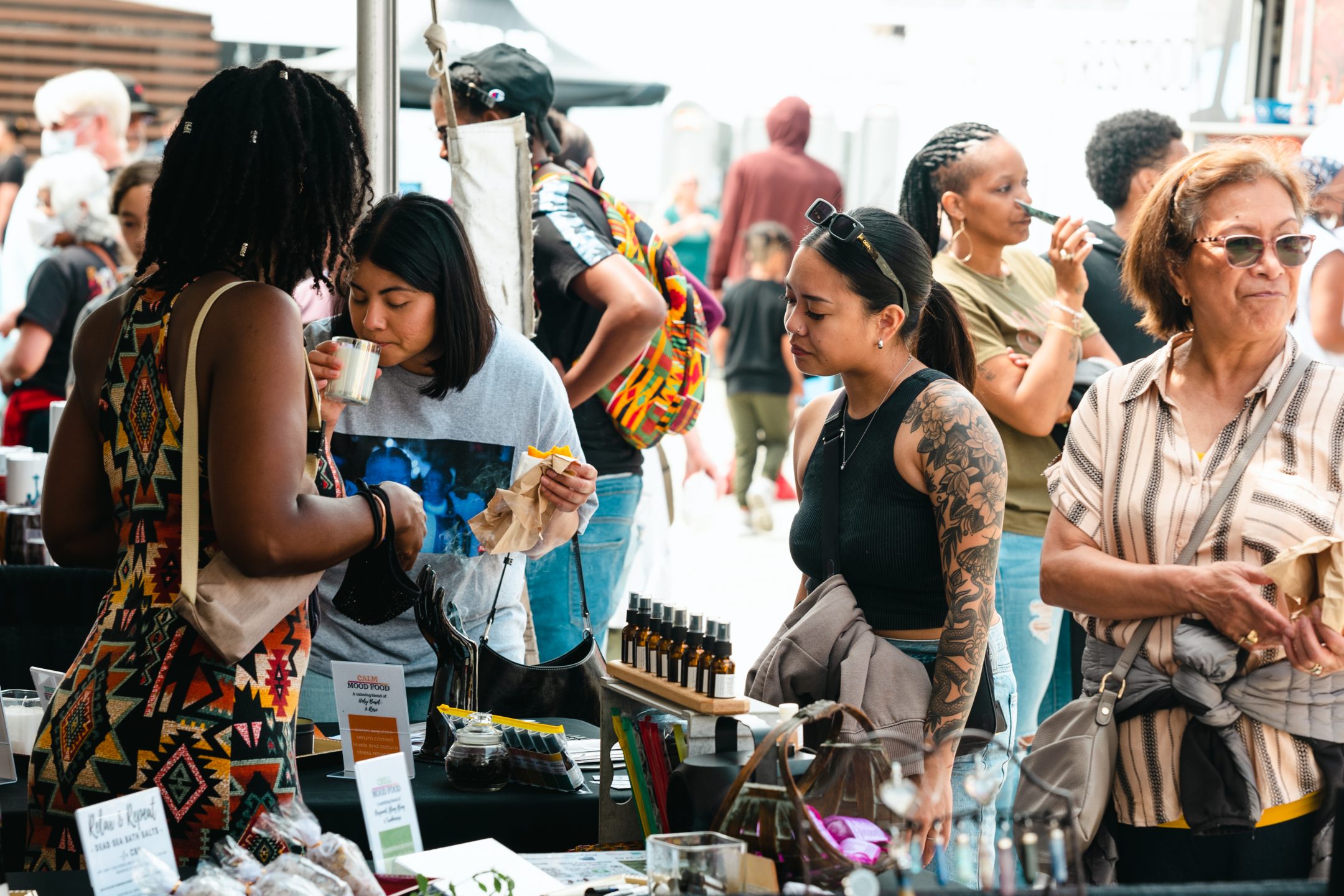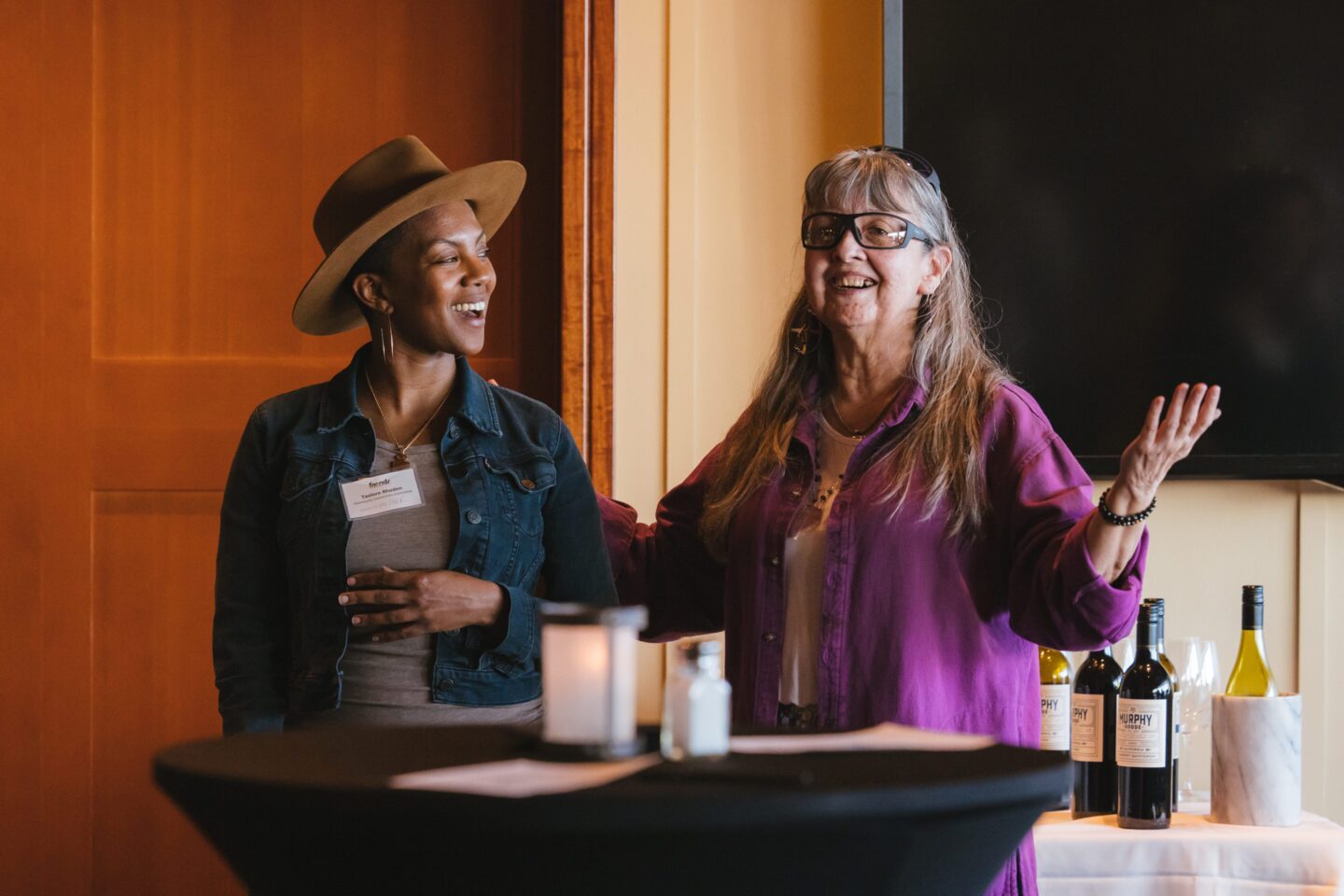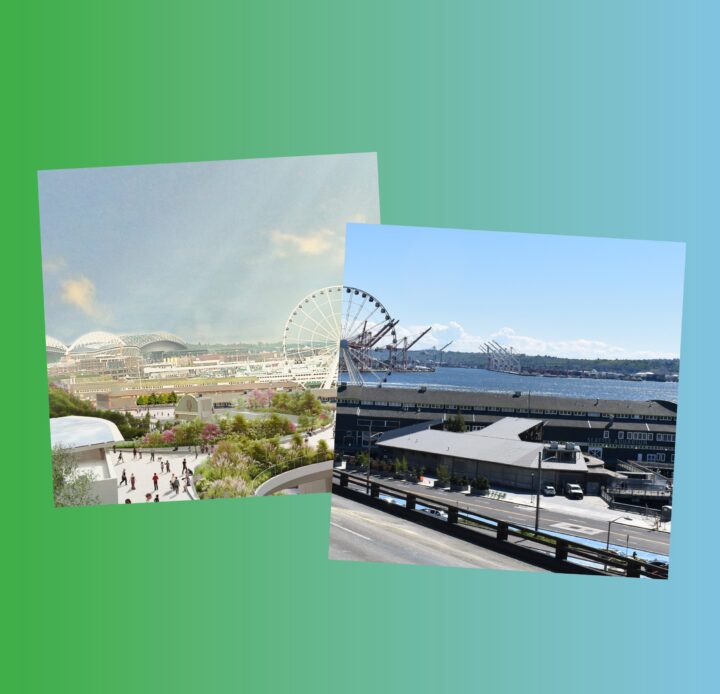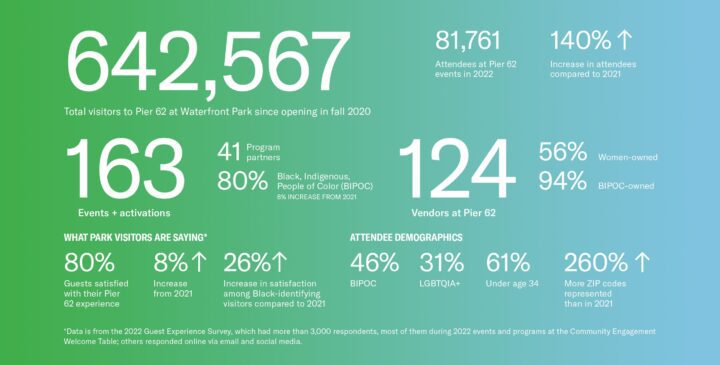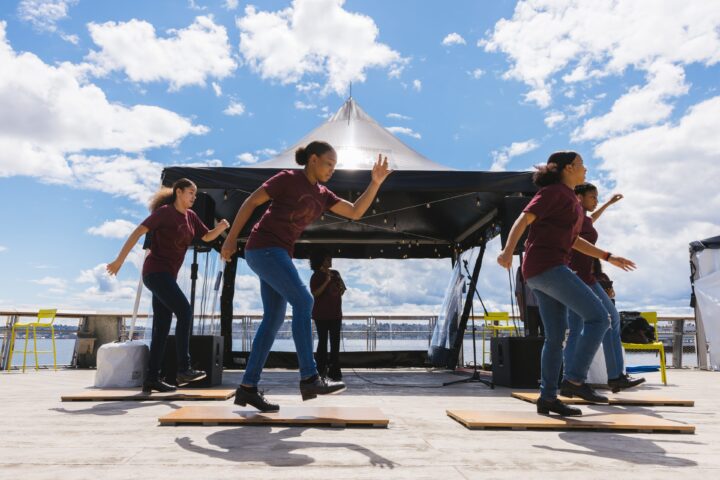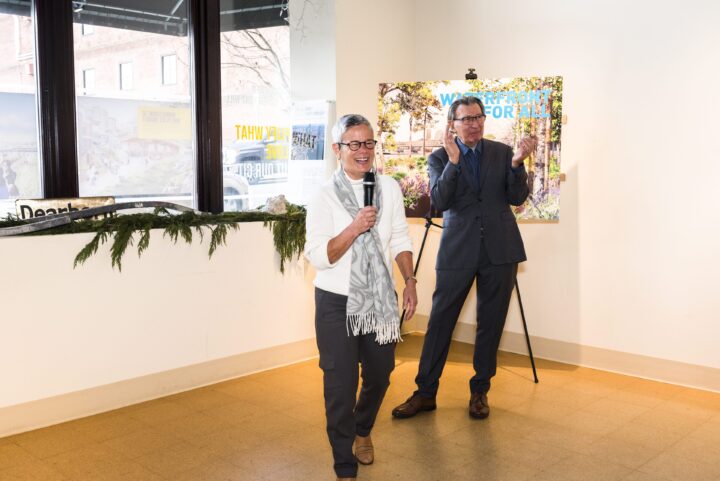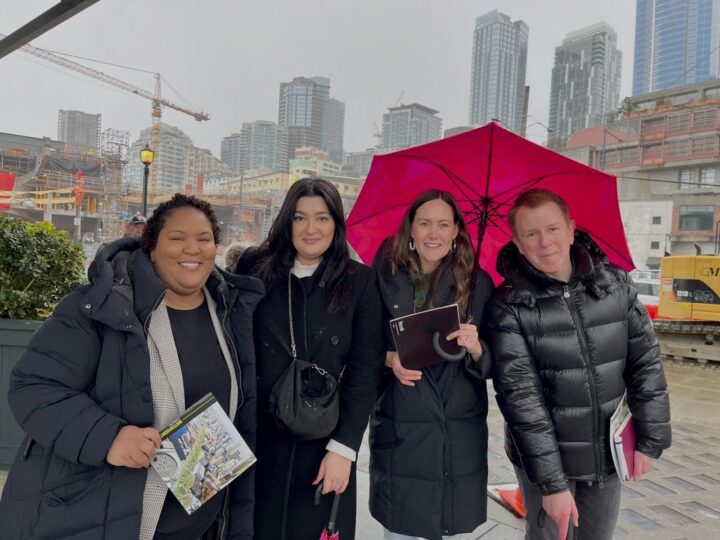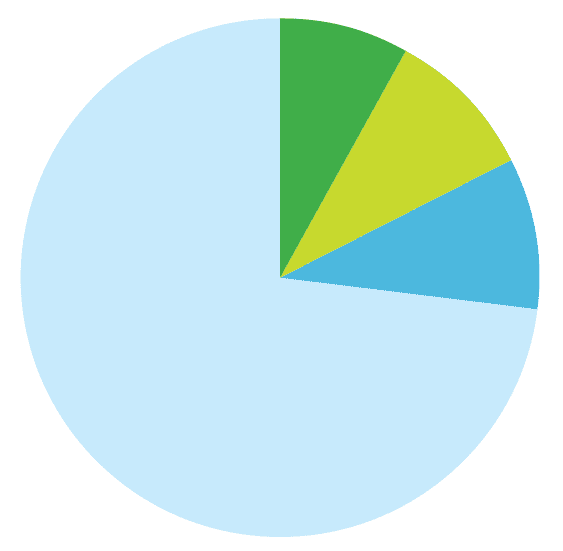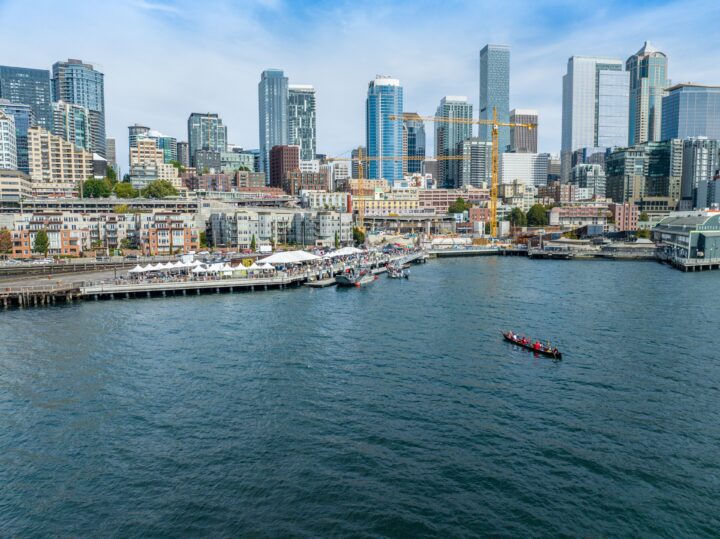Photo by OutsideThinc.
Thank you to our 2022 Community Partnership Committees
In 2022, Friends of Waterfront Seattle piloted two Community Partnership Committees, working to build inclusion and accountability in our organization’s equity efforts: the Pulling Together Committee (PTC) and the Community Partnership Committee (C3). Together, these groups give representatives of historically marginalized communities a venue to offer comments, concerns, and ideas on creating a waterfront that benefits people and groups who have historically been left out.
PTC consists of local Indigenous representatives, including Tribal leaders, Native urban residents, and Indigenous community members from North America and the Pacific Islands who live in the greater Puget Sound region. C3 consists of BIPOC residents of Seattle and the Puget Sound region.
Says Nico Onoda-McGuire, assistant director of community engagement for Friends: “We invited folks who wanted to be advocates and were curious to learn more—those who are coming in with prior knowledge, those who are intentional in their day-to-day work and want to bring their experience and insight into this space to make it a truly welcoming, inclusive, and equitable space for all.”
Friends staff present future projects and initiatives to the committees and give all members an opportunity to comment and provide feedback or ideas on making them beneficial for marginalized communities.
PTC member Ellany Kayce, a Tlingit Nation member, notes PTC’s emphasis on including the perspectives of elders—“making sure the waterfront is accessible for elders and showcasing not just the youth, because that’s often what most organizations prioritize.”
She adds: “We are also thinking about, How do we honor the elders? How do we honor our ancestors? And by partnering together, we can do all of the above. It’s about honoring the past, being fully present, and looking towards the future.”
One of C3’s founding members, José Vazquez, joined the committee because of his leadership work throughout Seattle. He says that the level of input the committee members are invited to provide is among the most rewarding aspects of the role.
“Finishing the year and seeing the reports and seeing some of my feedback and some of the things that I brought to the table—it feels really good to feel heard and seen,” Vazquez says. “It’s just like, okay, I contributed to something. My experience, expertise, and skill sets are represented here and will be used for a larger impact through the work that [Friends] does.”
Vazquez’s main takeaway from his first year on the committee was the intentional and continued effort by Friends to bring in the Seattle community. “[Friends wants to] bring in people from Seattle to be in that space, to enjoy themselves, to learn through culture—through education, music, you name it—to continue creating these spaces for community building,” he says.
Onoda-McGuire stresses that these committees are essential to creating the inclusive and community-driven environment that Friends envisions. “I have so much gratitude to all of the committee members who are each doing such incredible work in their own realms,” she says. “Many folks have experienced or seen a lot of segregation, siloing, and otherness throughout the city. These committees have shown that there’s beauty in coming together from different places with a shared mission and goals.”
